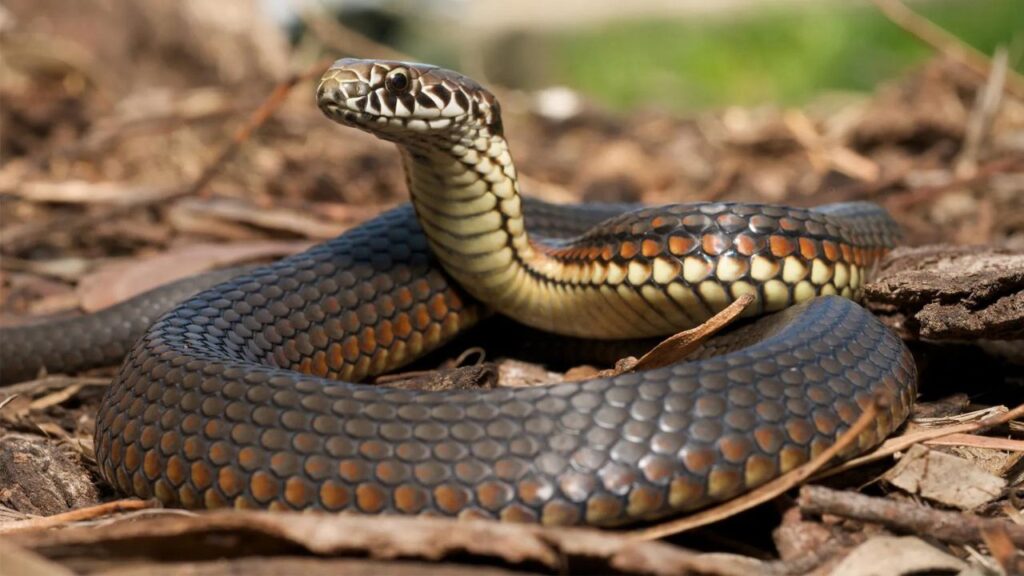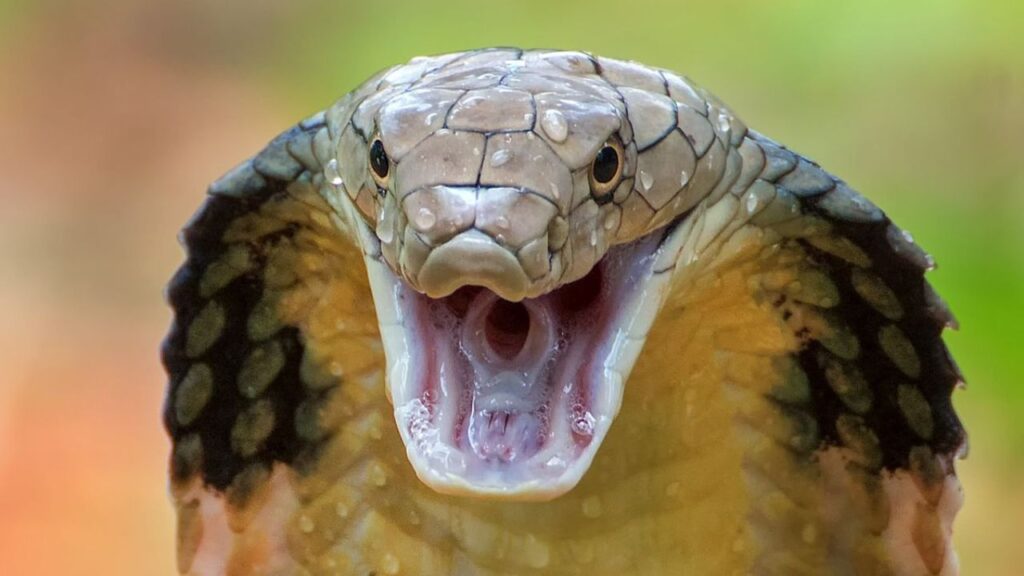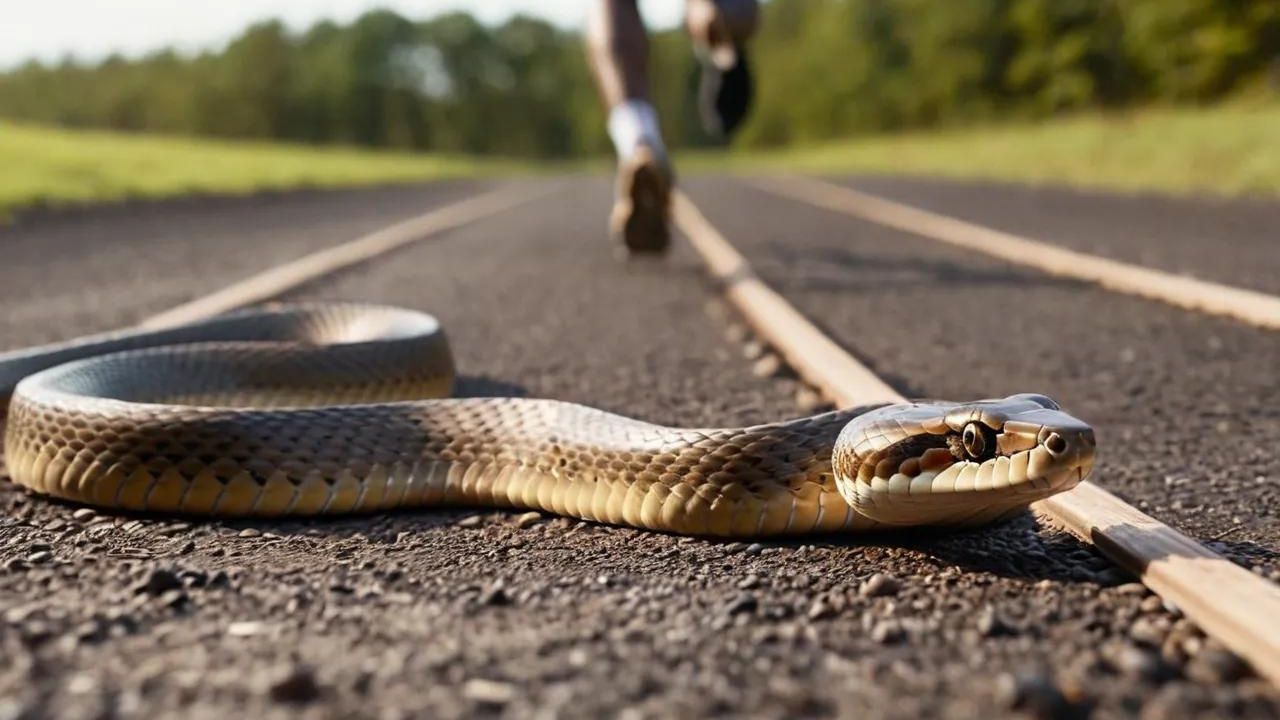Do Snakes Attack Humans? Snakes generally avoid humans, but attacks can occur if they feel threatened or provoked.
Snakes have long been a source of fascination and fear for many people. While some regard them as harmless creatures, others view them as dangerous predators capable of deadly attacks.
The idea of being attacked by a snake is a common fear, particularly in areas where venomous species are prevalent.
Despite their portrayal in movies and media as aggressive animals, most snakes would rather avoid humans than engage with them.
In this blog post, we’ll explore whether snakes attack humans, the circumstances under which this might occur, and how dangerous such attacks really are.
Understanding snake behavior is essential in debunking common myths and learning how to coexist with these fascinating creatures.
With this in mind, we will dive deep into the reasons behind snake attacks, explore the dangers associated with snake bites, and provide practical advice on how to stay safe in areas where snakes are common.
Contents
What Are Snakes?
1. Snake Species Diversity
Snakes are a diverse group of reptiles, with over 3,000 known species spread across the world. [Do Snakes Attack Humans?]
These species range from the tiny thread snake, which is only a few inches long, to the enormous reticulated python, which can grow up to 30 feet in length.
Snakes can be found on every continent except Antarctica, thriving in various habitats, including forests, deserts, wetlands, and even urban environments.
Among the thousands of snake species, only a small percentage are venomous. Some of the most well-known venomous snakes include cobras, vipers, and rattlesnakes.
Despite the fear they instill in humans, these snakes typically only use their venom defensively. On the other hand, non-venomous snakes, such as garter snakes and pythons, pose little threat to humans.
2. Behavior and Habitat
Snakes are typically elusive creatures that prefer to remain hidden, relying on camouflage to protect themselves from predators and humans alike.
Their habitats vary depending on the species, with some snakes favoring dense forests, while others thrive in dry deserts.
Snakes are cold-blooded animals, meaning they rely on external heat sources to regulate their body temperature. As a result, they are often more active during warmer seasons.
Most snakes are non-confrontational and will try to avoid humans whenever possible. [Do Snakes Attack Humans?]
If a snake feels threatened or cornered, it may resort to defensive behaviors such as hissing, coiling, or striking. However, these actions are usually meant to deter rather than harm.

Do Snakes Attack Humans?
1. When Do Snake Attacks Happen?
Snake attacks on humans are rare and typically occur under specific circumstances. The most common scenario involves humans accidentally disturbing or threatening a snake in its natural habitat.
For instance, hikers may unknowingly step on a snake while walking through tall grass, or someone might reach into a woodpile where a snake is hiding.
In these situations, the snake feels threatened and may bite in self-defense. [Do Snakes Attack Humans?]
Another common cause of snake bites is the mishandling of snakes. Some people, out of curiosity or a desire to relocate a snake, attempt to pick it up or move it without the proper knowledge or tools. This can provoke the snake into biting.
Additionally, snake bites are more likely to occur in areas where venomous snakes are common, such as in parts of Africa, Asia, and Latin America.
2. Are Snake Attacks Common?
Despite popular belief, snake attacks are not as common as many people fear. According to global statistics, millions of snake-human encounters happen each year, but only a small fraction of these result in actual bites.
For example, in the United States, where there are around 7,000 to 8,000 venomous snake bites annually, fatalities are extremely rare—averaging less than five per year.
This is largely due to the widespread availability of antivenom and medical care. [Do Snakes Attack Humans?]
In contrast, regions with less access to medical facilities may see higher rates of fatalities from snake bites. In parts of rural Africa and Asia, where venomous species like the black mamba or Russell’s viper are prevalent, snakebite envenomation is a more significant public health issue.
Nonetheless, even in these areas, snake attacks are typically avoidable with proper precautions and awareness.
3. Why Do Snakes Attack?
Snakes do not attack humans out of aggression or a desire to hunt. Unlike predators such as lions or sharks, snakes do not view humans as prey. Instead, snake bites occur primarily as a defensive mechanism.
When a snake feels threatened—whether by being stepped on, cornered, or touched—it may strike as a last resort to protect itself.
It’s essential to recognize that snakes often give warning signs before biting. For instance, rattlesnakes will use their signature rattle to alert potential threats, while cobras may flare their hoods as a display of aggression.
Understanding and respecting these warning signs can significantly reduce the chances of an encounter escalating to a bite.
4. Types of Snake Attacks
There are two main types of snake bites: venomous and non-venomous. [Do Snakes Attack Humans?]
Venomous snakes inject venom through specialized fangs, whereas non-venomous snakes lack venom and rely on constriction or simply biting as a defense mechanism.
- Venomous Bites: When a venomous snake bites, it injects venom into its victim. The severity of the bite depends on several factors, including the amount of venom injected, the location of the bite, and the species of the snake. In some cases, venomous snakes deliver what’s known as a “dry bite,” meaning no venom is injected. Dry bites occur in approximately 25-50% of venomous snake encounters, depending on the species.
- Non-Venomous Bites: Non-venomous snakes, such as corn snakes or pythons, do not have venom. Their bites are typically harmless, though they can still cause minor injuries such as puncture wounds and bruising. Some larger non-venomous snakes, like pythons, may use constriction as a defense or hunting strategy, but this is not a threat to humans unless the snake is very large.
5. Preventing Snake Attacks
The best way to prevent a snake attack is to avoid disturbing snakes in the first place. [Do Snakes Attack Humans?]
Awareness of your surroundings and respecting snake habitats can go a long way in minimizing the risk of encounters. Here are some practical tips for preventing snake attacks:
- Stay on Designated Paths: When hiking or walking through areas where snakes are known to live, it’s important to stay on marked trails and avoid tall grass or dense underbrush.
- Wear Protective Clothing: Wearing long pants, boots, and thick socks can provide a barrier between your skin and a snake’s fangs, reducing the risk of a bite.
- Be Cautious Around Hidden Areas: Snakes often hide in logs, rock crevices, or under debris. Always check before reaching into these areas.
- Give Snakes Space: If you encounter a snake, the best course of action is to back away slowly. Most snakes will not chase after humans and prefer to retreat.

How Dangerous Are Snake Bites?
1. Venomous vs Non-Venomous Bites
The danger posed by a snake bite depends largely on whether the snake is venomous or non-venomous.
Non-venomous bites generally cause little more than minor injuries, such as small puncture wounds, swelling, and bruising. However, venomous bites can be far more dangerous.
Venomous bites are characterized by immediate pain and swelling, followed by more severe symptoms depending on the species and the potency of the venom.
These symptoms may include difficulty breathing, paralysis, and in severe cases, organ failure. [Do Snakes Attack Humans?]
2. Effects of Venomous Snake Bites
Venomous snake bites can lead to a range of symptoms, from mild to life-threatening. [Do Snakes Attack Humans?]
The venom works by attacking the body’s tissues, nerves, or blood cells, depending on the type of venom (neurotoxic, cytotoxic, or hemotoxic). Common symptoms of venomous bites include:
- Pain and Swelling: The area around the bite will usually swell rapidly and become very painful.
- Nausea and Vomiting: Some people experience gastrointestinal symptoms after being bitten by a venomous snake.
- Difficulty Breathing: Venoms that affect the nervous system may cause breathing problems.
- Tissue Damage: In cases of cytotoxic venom, the venom may destroy tissue at the site of the bite, leading to necrosis if untreated.
Immediate medical attention is essential after a venomous snake bite, as antivenom may be required to neutralize the effects of the venom.
Without treatment, some bites can lead to permanent damage or death. [Do Snakes Attack Humans?]
3. Fatalities from Snake Bites
While snake bites can be serious, fatalities are relatively rare, especially in areas with access to medical care.
In the United States, for example, less than five deaths per year are attributed to snake bites, despite thousands of bites occurring annually. This is largely due to the availability of antivenom and the swift medical response.
In contrast, regions with limited healthcare infrastructure, such as rural parts of sub-Saharan Africa or South Asia, may experience higher rates of snakebite fatalities.
In these areas, venomous species like the black mamba or Russell’s viper are responsible for a significant number of deaths each year.
Common Myths About Snake Attacks
1. Are Snakes Aggressive by Nature?
One of the most common myths surrounding snakes is that they are aggressive animals that actively seek out humans to attack. In reality, snakes are not inherently aggressive and will only bite when they feel threatened or cornered.
Most snakes prefer to flee rather than fight, and they will often give warning signals, such as hissing or rattling, before resorting to biting.
2. Do Snakes Chase Humans?
Another popular myth is that snakes chase humans. While it may seem like a snake is chasing you, this is not the case.
Snakes move toward humans only if they feel that there is no other escape route. [Do Snakes Attack Humans?]
In most situations, they are simply trying to flee to safety, and their movements may give the impression that they are chasing you. In reality, snakes do not have the speed or inclination to pursue humans over long distances.
3. Can All Snakes Inject Venom?
Not all snakes are venomous. In fact, the vast majority of snake species are non-venomous and pose no significant threat to humans. [Do Snakes Attack Humans?]
Even among venomous species, some bites result in “dry bites,” where no venom is injected. These bites are relatively harmless, though they should still be monitored for signs of infection or allergic reaction.
Final Verdict
While snakes have the ability to attack humans, such incidents are rare and often preventable.
Most snake encounters result in the snake fleeing or remaining still to avoid detection.
Bites are typically defensive, not predatory, and occur when the snake feels threatened.
By understanding snake behavior, learning how to recognize venomous species, and taking precautions in areas where snakes are present, the likelihood of a snake attack can be minimized.
See Also: Do Kangaroos Attack Humans?
FAQs
What should I do if I encounter a snake?
Stay calm and slowly back away, giving the snake space to escape. Avoid sudden movements that might provoke the snake.
Are all snakes aggressive toward humans?
No, most snakes are not aggressive and will only bite in self-defense when they feel threatened.
How can I tell if a snake is venomous?
While identifying venomous snakes varies by region, some common features include triangular heads, elliptical pupils, and visible fangs. It’s best to avoid handling any snake unless you are sure of its species.
What are the first steps to take if bitten by a snake?
Seek immediate medical attention, especially if bitten by a venomous snake. Try to remain calm and immobilize the bitten limb to slow the spread of venom.
Are snake attacks fatal?
Snake attacks are rarely fatal, particularly with access to modern medical treatment and antivenom. [Do Snakes Attack Humans?]
Conclusion: Do Snakes Attack Humans?
In conclusion, while snakes can and do bite humans, such incidents are relatively rare and usually occur in situations where the snake feels threatened.
The best way to avoid a snake attack is through awareness and caution in areas where snakes are common. [Do Snakes Attack Humans?]
Understanding that snakes are more likely to flee than fight can help alleviate some of the fear surrounding these often misunderstood creatures.
By respecting their space and recognizing their defensive behavior, we can coexist with snakes peacefully and safely.

Hello, I am Rosa Ellis, a mother of two and a wildlife blogger. I grew up in New York City, but I love exploring forests. I’ve traveled to places like Yellowstone National Park and the Amazon Rainforest to see animals up close. I know a lot about animal behavior and which animals can be dangerous to humans. Thanks for visiting my blog!

